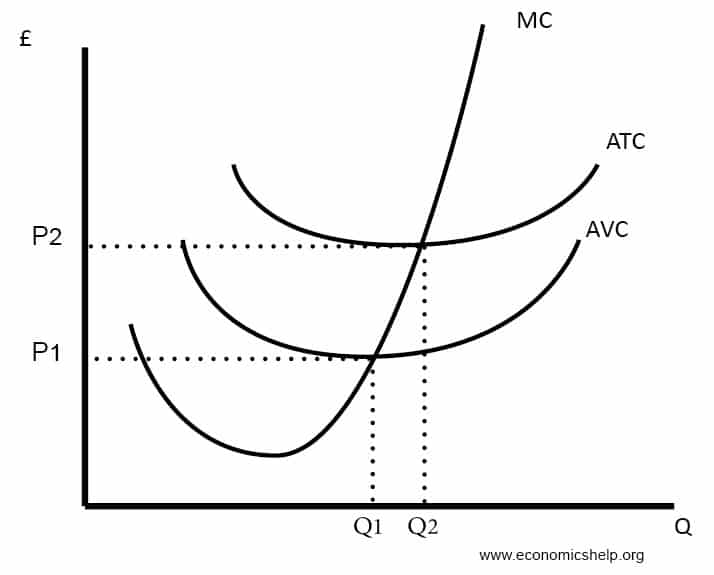
Short run cost curves tend to be U shaped because of diminishing returns.
In the short run, capital is fixed. After a certain point, increasing extra workers leads to declining productivity. Therefore, as you employ more workers the marginal cost increases.
Because the short run marginal cost curve is sloped like this, mathematically the average cost curve will be U shaped. Initially, average costs fall. But, when marginal cost is above the average cost, then average cost starts to rise.
Marginal cost always passes through the lowest point of the average cost curve.

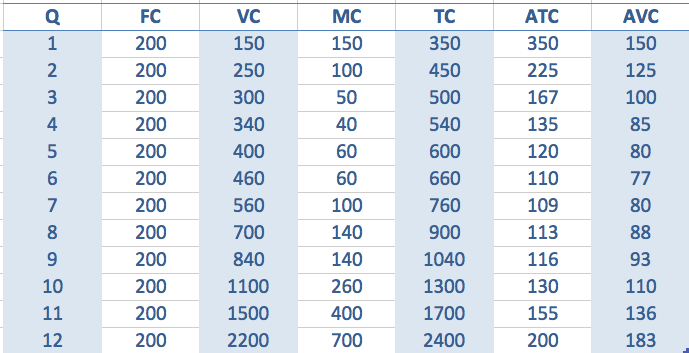
Average fixed costs
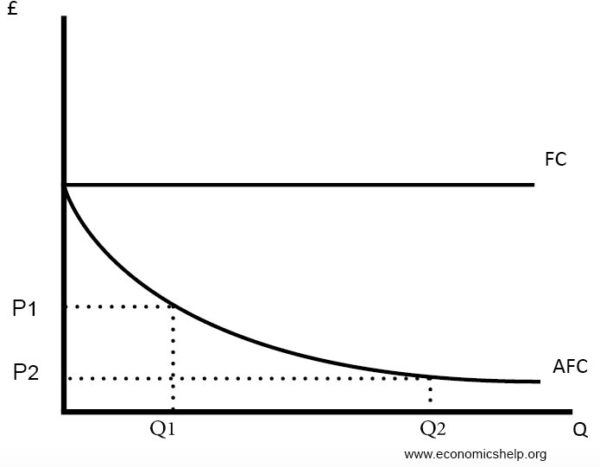
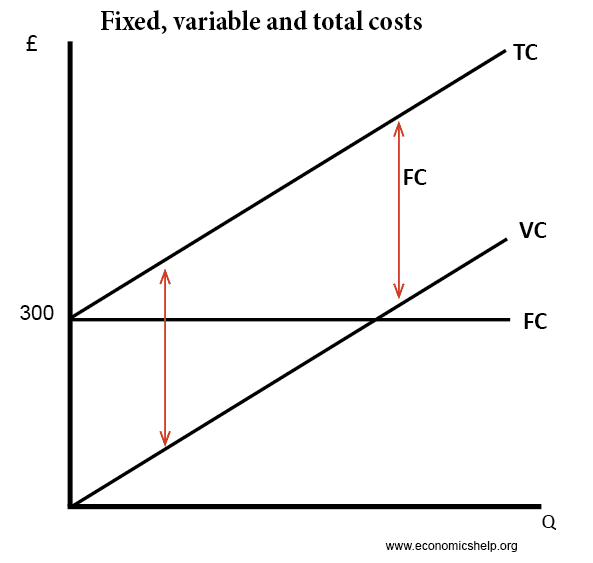
Total cost (TC) = Variable cost (VC) + fixed costs (FC)
The long-run cost curves are u shaped for different reasons. It is due to economies of scale and diseconomies of scale. If a firm has high fixed costs, increasing output will lead to lower average costs.
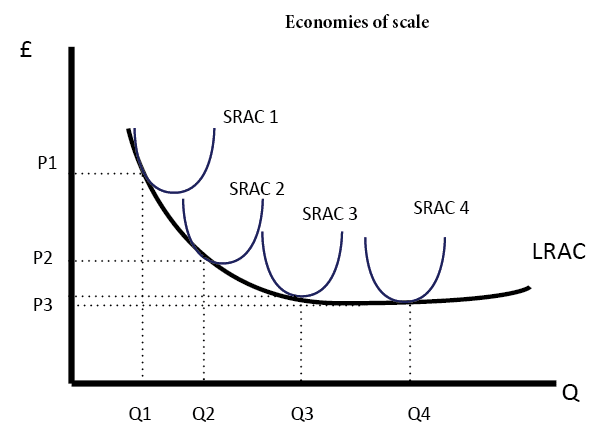
However, after a certain output, a firm may experience diseconomies of scale. This occurs where increased output leads to higher average costs. For example, in a big firm, it is more difficult to communicate and coordinate workers.
Diagram for Economies and Diseconomies of Scale
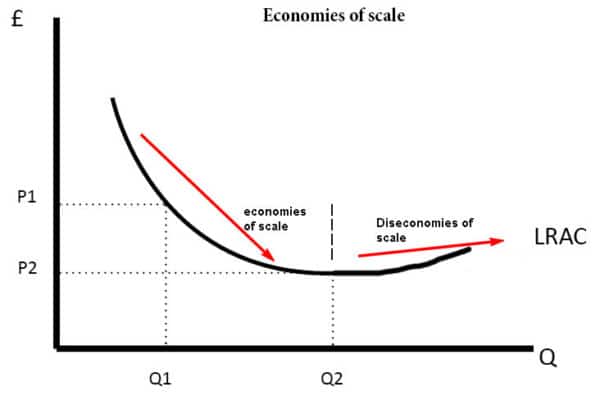
Note, however, not all firms will experience diseconomies of scale. It is possible the LRAC could just be downward sloping.
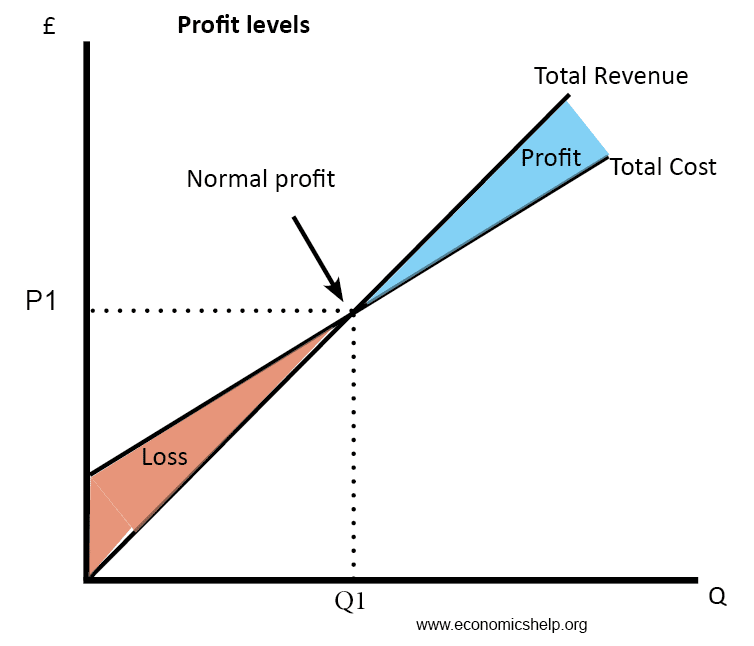

Related
Marginal fixed cost is the total fixed cost at one unit of output and is nil for all higher units of output. Average fixed cost is also the total fixed cost at one unit of output but declines in the form of a hyperbola for all higher units of output. Marginal variable costs are the same as average variable costs. Cost accountants have been quicker than economists to recognise this. The U shaped cost curve with its declining marginal curve is economically unrealistic as well as being superfluous. All these marginal and average curves can be shown on the same coordinates diagram.
Thanks pete! i got so many points while studying these diagram these diagram cleared all of my doubts in short run& in long run motion tshuma yaaah simplified diagrams Henry Munyalo I understood the Cost Curves better after reading this article .Keep up the good work ; From Kenyakindly help with:
show how diminishing marginal physical product id related to the shape of short-run marginal and average cost curves
great and helpful…..but was confused on which diagram to use in answering my question….the section of a firms short-run marginal cost curve above the average cost curve is taken as its supply curve; show the validity of this statement in a diagram
Nchimunya Simwangala thank for the clear explanation and diagrammatic expression of costs. Mantey Gideon Thanks for clear explanation of the types of cost from Ghana Muhammad Shafiq what a great and simple explanation of the cost and its types and curves Ayo Lucia Gift After going true the note I now understand it better then before,keep the good work Thanks for graphics explanation, have acquire a lot.the profit maximising monopoly would produce at the profit maximising quantity Q1 where mc = mr (1link) and charge a price of P1. This would limit some people from having access to the good(1link). They are able to charge at a price P1 because they could be a main supplier of a unique good(1link) or there could be high barriers to entry such as intellectual property rights(1link), and exit such as expensive marketing campaigns (1link) which means there is no threat of new entrants. Here the firm would be making super normal profit P1-C1 x Q1 (1link). this is profit over and above normal profit where AR>AC(1link).
Sr Esther DavidAt least now I understand cost theory has different aspects: total cost, fixed cost, and variable cost. In which Variable cost changes as the output changes, fixed cost remains constant as the output increase. Total cost is the total amount spent on fixed and variable inputs to produce outputs
we also have;
average fixed cost
average total cost
Averavariable
Helpful presentation,however can you please elaborate further on the Total cost curve explaining what certain points represent.n